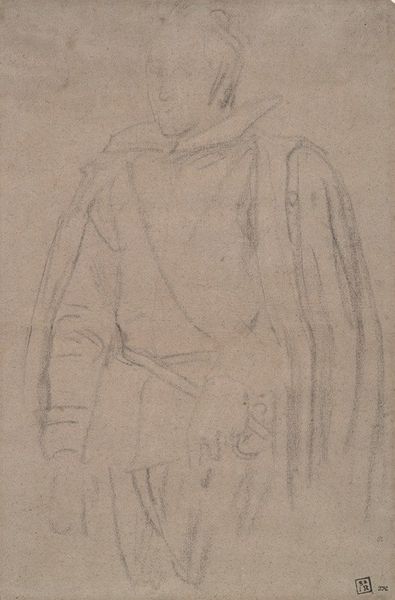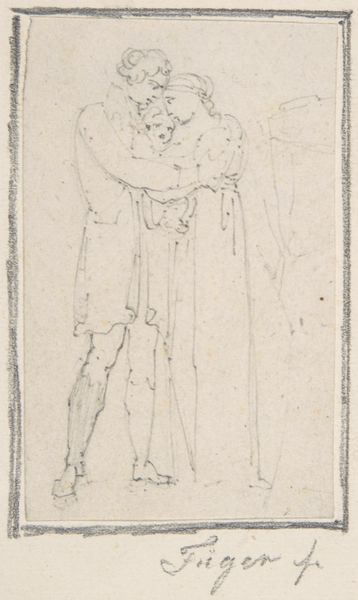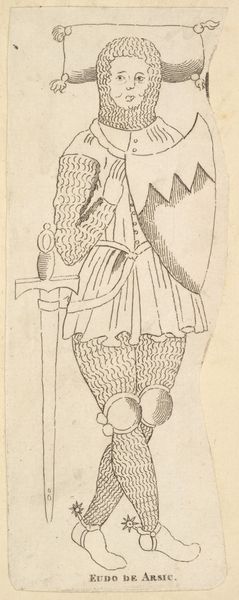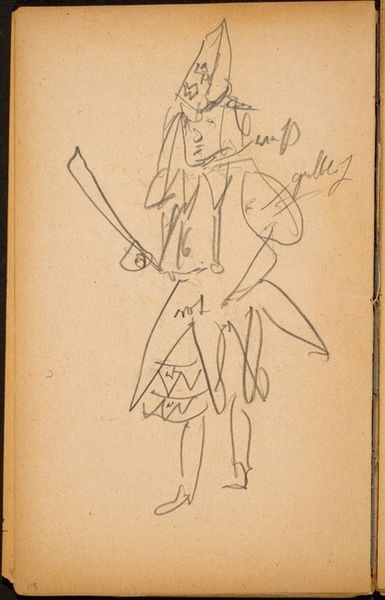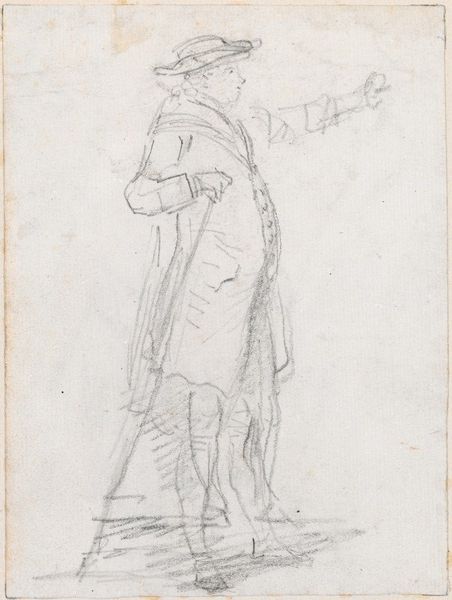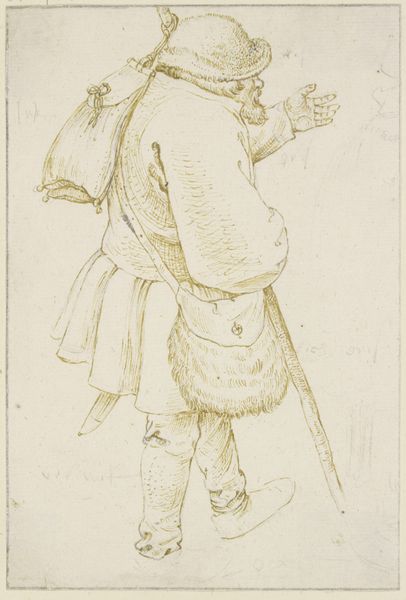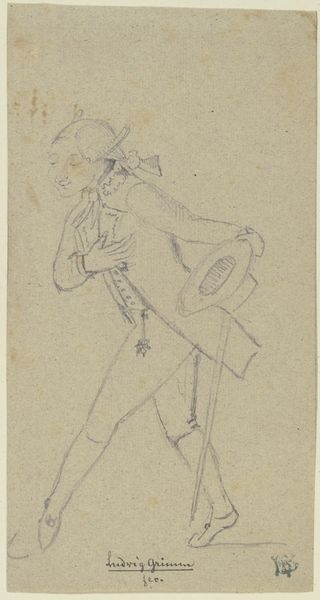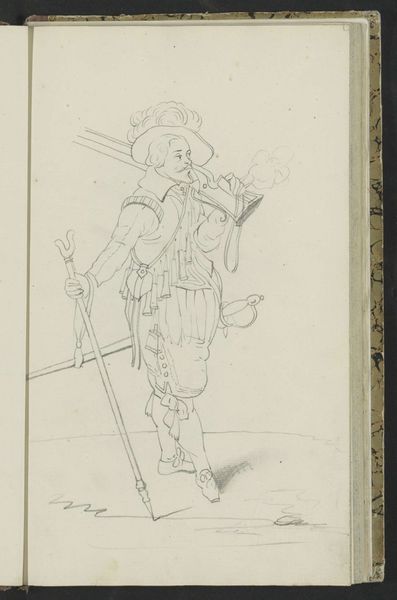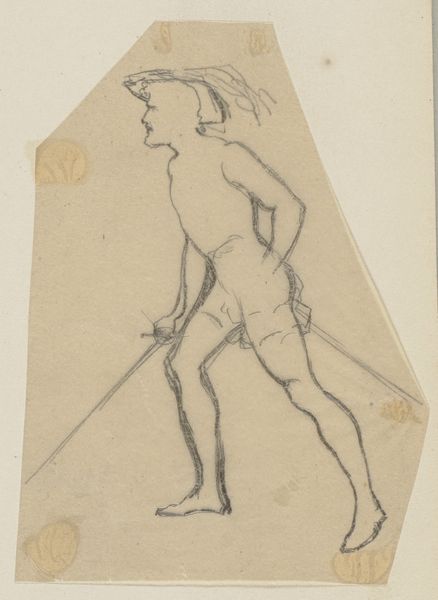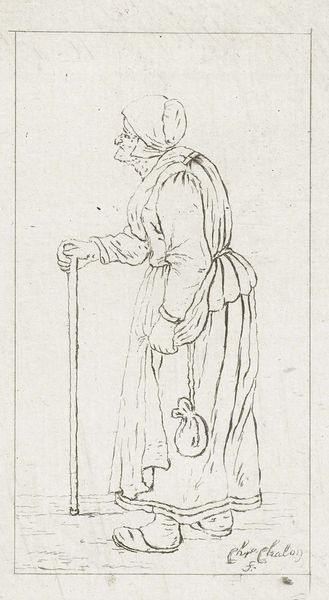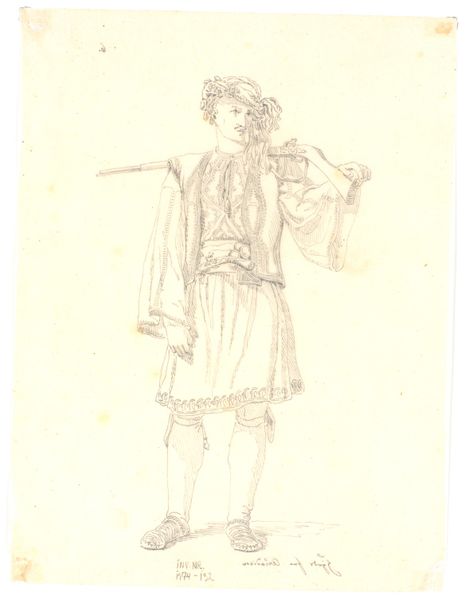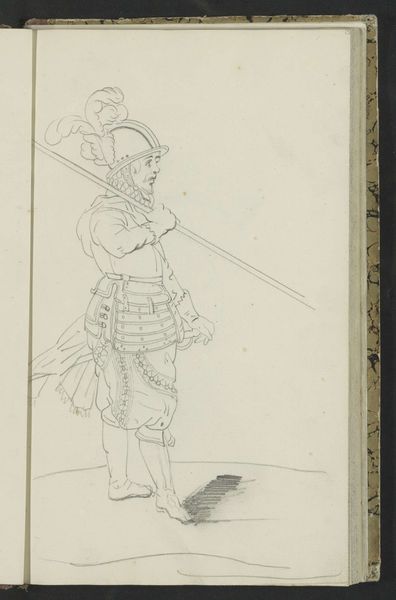
drawing, print, pencil
#
portrait
#
drawing
# print
#
figuration
#
pencil
#
line
Copyright: National Gallery of Art: CC0 1.0
Editor: This intriguing work, "Mummer and Harlequin," possibly from 1960 by Leon Karp, is a pencil drawing, also considered a print. It feels incredibly delicate and unfinished, like a fleeting thought captured on paper. What stands out to you in this piece? Curator: Well, I'm immediately drawn to the materiality of it. It’s a print made from a drawing, reproducing the original artist's gesture through industrial means. What does that process say about accessibility and the value placed on artistic "aura?" How does mechanical reproduction transform a personal sketch into a commodity? Editor: That's a really interesting point! So you're thinking about how the act of printing changes the artwork's relationship with the viewer and its cultural status? Curator: Precisely. Think about the labor involved: Karp's hand, the printing process, distribution. These are not simply aesthetic decisions; they reflect the socio-economic conditions surrounding the work. The "unfinished" quality you noted could be intentional, a deliberate commentary on production and consumption. The line drawing suggests a mass-produced image, rapidly consumed. Is this a comment on popular culture perhaps? Editor: I see, the "Mummer and Harlequin" are traditional theatrical characters often associated with commentary on society, so maybe their rapid reproduction reflects a sense of…cheapening of those traditions? Curator: Yes, and let's also consider the historical context: 1960. Post-war consumerism was booming. What role does art play in that? Is Karp critiquing this new world, or embracing the democratization of art? Consider how the price of art affects the circulation of ideas, impacting the communities engaged or alienated from them. Editor: It’s a lot more layered than I initially thought! Looking at it from a materialist perspective really opens up new avenues for interpretation. Curator: Indeed. Focusing on the materials and modes of production can reveal how art is not just an object of beauty, but a product of its time, embedded in a network of social and economic relationships. Hopefully this offers food for thought on future artworks!
Comments
No comments
Be the first to comment and join the conversation on the ultimate creative platform.
